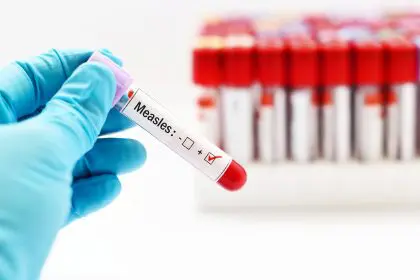Few symptoms create more immediate alarm than coughing up blood. This frightening sign, medically termed hemoptysis, indicates that something significant requires attention in your respiratory system. Understanding the potential causes and appropriate responses could save your life when minutes matter.
Recognizing true hemoptysis
Hemoptysis specifically refers to blood that originates from the respiratory system—the lungs, airways, or throat. This blood typically appears bright red and may contain bubbles or froth from mixing with air in the lungs. It emerges after coughing, often following a tickling sensation in the throat or chest, and may mix with sputum (mucus from the lungs).
This differs significantly from vomited blood, which comes from the digestive tract and is usually preceded by nausea and abdominal discomfort. Making this distinction helps determine the likely source and appropriate medical evaluation pathway.
Common causes of coughed-up blood
Various conditions can cause hemoptysis, ranging from relatively benign to life-threatening emergencies:
Respiratory infections represent the most common cause. Acute bronchitis, pneumonia, and tuberculosis can all inflame or damage the airways, causing small blood vessels to break. The bleeding typically appears as blood-streaked sputum rather than pure blood and often accompanies other infection symptoms like fever, cough, and chest discomfort.
Chronic respiratory conditions often lead to recurring episodes. Bronchiectasis, where airways become abnormally widened and damaged, frequently causes blood-streaked sputum during flare-ups. Chronic obstructive pulmonary disease (COPD) can cause hemoptysis when infections exacerbate existing airway inflammation. Cystic fibrosis, particularly in advanced stages, may lead to hemoptysis due to chronically inflamed airways.
Pulmonary embolism—a blood clot that travels to the lungs—represents one of the most serious causes. This medical emergency typically presents with sudden-onset shortness of breath, chest pain that worsens with breathing, and sometimes coughing up blood. The bleeding occurs when the clot damages lung tissue as blood pressure increases in blocked vessels.
Lung cancer remains an important consideration, particularly in smokers or former smokers over 40. The bleeding often begins subtly—small amounts of blood-streaked sputum—before becoming more frequent or severe. Additional concerning symptoms include unexplained weight loss, progressive shortness of breath, or chest pain.
Cardiovascular conditions can sometimes present with hemoptysis. Congestive heart failure, particularly when severe, can cause fluid buildup in the lungs that damages small blood vessels. Mitral stenosis, a heart valve abnormality, creates increased pressure in lung vessels that can lead to blood in sputum.
When to seek immediate medical attention
Certain characteristics indicate potentially life-threatening situations requiring emergency care:
The volume of blood provides critical information about urgency. Coughing up more than a few teaspoons of blood (approximately 20-30 mL) always warrants immediate medical attention. Massive hemoptysis—defined as coughing up more than 100 mL (about half a cup) of blood within 24 hours—represents a medical emergency with a high mortality rate.
The rate and progression of bleeding significantly impact urgency. Bleeding that increases in volume or frequency over minutes to hours, rather than remaining stable or decreasing, indicates a potentially worsening situation requiring immediate assessment.
Associated symptoms often provide crucial information about severity. Accompanying severe shortness of breath, chest pain, dizziness, or rapid heart rate suggests serious underlying conditions like pulmonary embolism or significant lung damage requiring immediate care.
Certain medical backgrounds make even small amounts of coughed up blood more concerning. Individuals with underlying lung or heart disease or conditions affecting blood clotting should seek prompt medical attention even for small volumes of blood.
First aid and immediate steps
While awaiting medical attention, certain measures can help manage the situation:
Position yourself to minimize risk of blood flowing into unaffected lung areas. Sit upright or slightly leaning forward, which helps keep blood localized and makes breathing easier. If you know which side the blood comes from, consider lying with that side downward to prevent blood from flowing into the healthy lung.
Track and document the bleeding. Estimate the amount by comparing to common household measurements—teaspoons, tablespoons, or cups. Note the blood’s appearance and whether the bleeding appears to be increasing, decreasing, or staying consistent.
Avoid certain actions that might worsen the situation. Don’t take aspirin or other blood-thinning medications. Minimize coughing if possible, as forceful coughing could potentially increase bleeding.
Prepare important information for emergency responders, including current medications, relevant medical history, and recent symptoms leading up to the bleeding.
Diagnostic and treatment approaches
Healthcare providers follow systematic approaches to identify and address the bleeding source:
Imaging studies typically begin the evaluation. Chest X-rays provide initial assessment, while CT scans offer more detailed images to help locate specific bleeding sources and identify subtle abnormalities.
Bronchoscopy often provides direct visualization. This procedure involves inserting a thin, flexible scope with a camera into the airways, allowing direct examination of the breathing passages and sometimes enabling immediate treatment of bleeding sites.
Treatment approaches vary based on severity and cause:
For mild hemoptysis with identified causes, treatments focus primarily on the underlying condition. Respiratory infections typically require appropriate antibiotics, while chronic conditions need optimized management.
Moderate to severe cases often require more aggressive interventions. Bronchial artery embolization—where materials are injected to block blood flow to bleeding vessels—effectively controls bleeding in many cases. Surgical intervention might become necessary for certain conditions.
Blood component therapy becomes necessary in severe cases to replace lost blood volume and restore oxygen-carrying capacity.
By understanding the potential causes and appropriate responses to hemoptysis, you can take swift action when this alarming symptom appears, potentially making a life-saving difference in critical situations.








